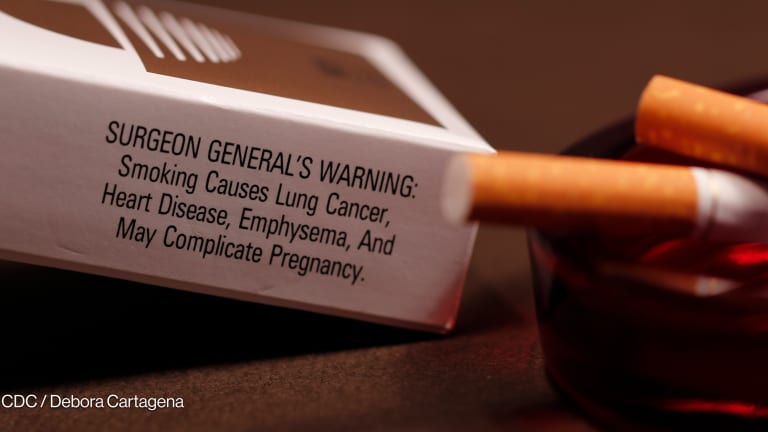
Each day an estimated 100,000 people die from noncommunicable diseases. While most deaths occur in developing countries, nothing much is being done about it, says Dr. Ayham Alomari, senior health officer at the International Federation of Red Cross and Red Crescent Societies.
This month, IFRC announced a two-year partnership with the International Federation of Pharmaceutical Manufacturers & Associations, an international research-based group, to promote the prevention of NCDs.
The two organizations will work together to design a behavioral change-based tool kit. It is hoped that this tool kit will help prevent the incidence of the four main NCDs — cardiovascular diseases, cancer, chronic respiratory diseases and diabetes — that cause three in every five deaths worldwide.
Alomari, who will lead this initiative on the ground as IFRC’s senior health officer for community-based health and first aid (noncommunicable diseases), speaks in more detail below on combating the world’s top killer diseases through a tool kit that fosters community participation.
What makes the tool kit that you are designing with IFPMA different?
We reviewed many tool kits and saw that most of them are only reference kits that provide basic information, such as the definition of NCDs. We wanted to go one step further and find ways to empower communities with the knowledge and skills to find solutions for themselves. With this new tool kit, we are taking tool kits from the professional level to the nonprofessional, daily use of communities by making it simple, easy-to-use and adaptable to their own context.
The tool kit will promote the prevention of NCDs through healthy lifestyle choices brought about by changes in behavior, which eliminate shared risk factors. Risk factors — unhealthy diet, physical inactivity, alcohol ingestion and smoking — are those that contribute to the majority of the incidence of NCDs.
By using the new tool kit, an individual in a community will not only prevent one problem but all four main NCDs at the same time, since these NCDs are tied to the same risk factors.
How will this initiative be implemented at the community level?
The tool kit will not be a stand-alone program, but will be integrated into our existing community health-based program, which allows us to leverage the community volunteers already on the ground through our more than 72 national societies. We have had decades of experience in implementing community health-based programs.
This program comprises volunteers working closely with the most vulnerable communities and their leaders to identify key community volunteers who will eventually lead the program themselves. To this end, we hold training and capacity-building activities for communities, so that they will be able to participate in the process and are empowered to address their own issues.
This new tool kit will be designed to be a generic tool that communities can adapt to their own context. We will have it translated into the four official IFRC languages — English, French, Spanish and Arabic — and we will also conduct trainings to reach more than 50 countries worldwide.
And at the national level?
We link all IFRC programs to the health system of the host government. This is the approach that IFRC takes in all its programs, having an auxiliary role to governments and working hand-in-hand with them for advocacy work.
The challenge is that while some governments recognize that preventing NCDs is important, many still do not have this as a priority. And those that do, mostly focus on the treatment but little on prevention as we are trying to promote with the new tool kit. When a government’s health system is in line with the prevention of NCDs, the implementation will progress better.
Why have you chosen to partner with IFPMA in rolling out the tool kit?
We are now approaching an era where more public-private partnerships are happening, and this is an area that we would like to explore more. This initiative with the IFPMA is the first of its kind to move forward with the support of the private sector.
Partnering with IFPMA is ideal, since IFRC and IFPMA have the joint objective of fighting NCDs. The framework of our organizations also match, in that both promote innovation, research, partnership and education in combating NCDs. By partnering with IFPMA, we will be able to leverage their communication and advocacy skills, while we can offer our volunteers on the field. IFPMA will also provide cash support to move this initiative forward.
Why is it important to tackle NCDs through a community-based approach?
It used to be that NCDs are limited to high-income countries, but that is not true any more. Over 80 percent of premature deaths caused by NCDs now occur in middle to low-income countries where the most disadvantaged communities live and where the weakest health systems are. In these communities, most NCDs are detected very late and have the most impact, since community members cannot afford costly treatments. It is important to raise awareness for NCDs’ prevention in these communities since 50 percent of the incidence of NCDs are known to be preventable.
Since NCDs are now a community problem, they must be dealt with on a community level. I believe that community-based programs are the most challenging, but are also the most effective means.
What are your next steps?
The tool kit will be disseminated by the third quarter of this year. We are currently developing it, after which it will be finalized and piloted. In the next few weeks, we will convene more than 25 community health experts from all over the world in Kuala Lumpur [Malaysia] to gather feedback on the toolkit. In the coming months, consultations will also be undertaken with academia.
Read more development aid news online, and subscribe to The Development Newswire to receive top international development headlines from the world’s leading donors, news sources and opinion leaders — emailed to you FREE every business day.








